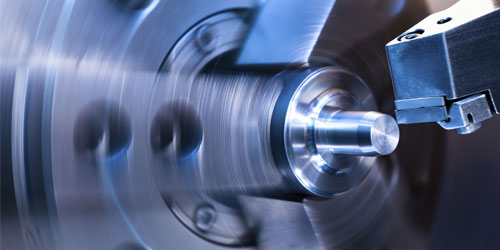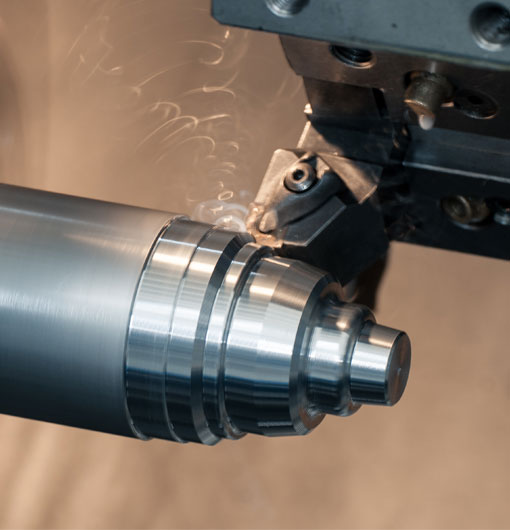CNC vertical turning is an essential process in various industries, including aerospace, automotive, electronics, and more. It involves the use of computer numerical control (CNC) machines to accurately and efficiently create intricate parts with high precision. In this comprehensive guide, we will explore various tips and techniques that can help enhance your CNC vertical turning efficiency, leading to improved productivity and cost savings.
Understanding the Basics of CNC Vertical Turning
CNC vertical turning is a subtractive manufacturing process that involves removing material from a workpiece to produce a desired shape. The workpiece, typically a cylindrical metal piece, is held in a vertical orientation and rotated as the cutting tool moves across its surface to remove material. This process is commonly used for producing intricate features on large and heavy parts, such as discs, rings, and gears.
Choosing the Right Equipment
To ensure optimal CNC vertical turning performance, it's essential to invest in the right equipment. Some factors to consider when selecting a CNC vertical turning machine include:
1. Type of control system: Choose a control system that is compatible with your shop's existing software and offers user-friendly programming options. Popular control systems for CNC vertical turning machines include FANUC, Siemens, and Heidenhain.
2. Axis configuration: Depending on the complexity of the parts being turned, a machine with multiple axes may be necessary. Machines with two axes (X and Z) are suitable for simple parts, while machines with C, Y, and B axes enable more complex and simultaneous movements.
3. Spindle and turret options: Opt for a machine with a powerful spindle and a versatile turret to handle various cutting tools and processes efficiently.
4. Maximum turning diameter and height: Select a machine with the appropriate turning diameter and height based on the size of parts you typically produce.
5. Load capacity: Determine the weight and size of the workpieces you will be working with and choose a machine with adequate load capacity and tool clearance.
Optimizing Cutting Parameters
Fine-tuning cutting parameters, such as feed rate, depth of cut, and spindle speed, can bring significant improvements to your CNC vertical turning process. Here are some tips to help:
1. Use cutting-edge technology: Take advantage of advanced cutting tools made of materials such as coated carbide, ceramic, and cubic boron nitride (CBN) to optimize cutting performance and reduce tool wear.
2. Select the appropriate cutting speed: Determine the best cutting speed based on factors like workpiece material, tooling, coolant, and machine rigidity. In general, a higher cutting speed is suitable for softer materials, while a lower speed is necessary for harder materials.
3. Optimize the feed rate: Start with a conservative feed rate and gradually increase it while monitoring tool wear and surface finish. A higher feed rate can lead to faster production but may compromise tool life.
4. Control the depth of cut: Choose the right depth of cut based on the workpiece's hardness and tooling type. Deeper cuts will increase the material removal rate, but may also cause excessive tool wear.
5. Apply proper coolant and lubrication: Use appropriate coolant and lubrication to reduce friction, manage heat, and prolong tool life.
Solving Common CNC Vertical Turning Challenges
Addressing common issues faced during the CNC vertical turning process can significantly impact efficiency. Here are some solutions to typical challenges:
1. Tool chatter: To minimize chatter, ensure proper tool alignment, secure workpiece clamping, and maintain optimal cutting parameters.
2. Tool wear: To prolong tool life, use high-quality cutting tools, apply proper coolant and lubrication, and regularly assess tool wear for adjustments.
3. Surface finish issues: Address surface finish problems by optimizing cutting parameters, using sharp cutting tools, and employing appropriate coolant application.
4. Workpiece deformation: To prevent workpiece deformation, choose appropriate clamping strategies, use supported workpiece setups, and manage cutting forces.
Employing Proper Maintenance and Troubleshooting
Regular maintenance of your CNC vertical turning machine can significantly reduce downtime, ensure durability, and maintain accuracy. Some maintenance tasks include:
1. Cleaning and lubricating components: Regularly clean and lubricate the machine's sliding surfaces, guides, and ballscrews to prevent wear and maintain smooth operation.
2. Checking and replacing filters: Monitor the condition of filters and replace them as necessary to maintain optimal machine performance.
3. Inspecting electrical system components: Regularly inspect electrical components for signs of wear, damage, or overheating, and replace them as needed to avoid unexpected breakdowns.
In addition to preventative maintenance, it's essential to develop troubleshooting skills to identify and correct issues promptly. Familiarize yourself with common error codes, consult the machine's operating manual, and communicate with experienced operators and technicians when encountering problems.
By implementing the tips and techniques discussed, you can enhance CNC vertical turning efficiency, improve part quality, and achieve considerable cost savings throughout your processes. Continuous learning and skill development are crucial in staying competitive and adapting to new technologies and methods in the rapidly evolving manufacturing industry.
cnc vertical turning













